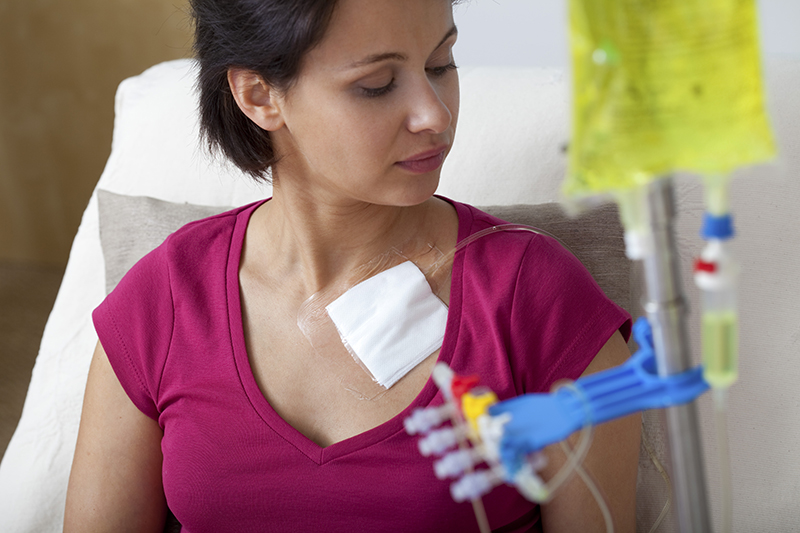Medical Oncology
Medical oncology, commonly known as chemotherapy, entails the use of chemical agents to destroy rapidly multiplying cells as cancer cells are abnormal and multiply rapidly.
Aim of chemotherapy treatment :
-
Cure :
if possible, chemo can be used to destroy cancer so that it doesn’t come back. There is no guarantee that there is a 100% cure of cancer, however, the intent of chemotherapy is usually curative.
-
Control :
If cure is not possible, then the goal of treatment may be to control the disease. Chemo may be used to shrink or to prevent the spread of the tumor to other parts of the body.
-
Palliation :
Chemotherapy can be used to ease the symptoms caused by cancer. When cancer is in its advanced stages, it has spread to other parts of the body. The goal of therapy then becomes to help the person feel better by improving the quality of life.
Chemotherapy may be given in many different ways:
- Adjuvant Therapy : chemotherapy in conjunction with another treatment modality (Surgery or radiation therapy)
- Neoadjuvant Therapy : the intention of this therapy is to shrink the tumor prior to surgical removal
- Primary Therapy : Chemotherapy given to patients with tumors which are chemosensitive with curative intent.
- Induction Chemotherapy : High dose of chemotherapy is given initially to decrease the tumor burden followed by maintenance chemotherapy.
- Combination Chemotherapy : The use of 2 or more chemotherapeutic agents to treat cancer in a synergistic effect.
- Chemo-Radiotherapy : Chemotherapy is combined with radiation therapy.
In most cases, the choice of chemo drug to be used is clear, however, there is never one single way to treat certain cancer types. When choosing a drug for treatment, the factors taken into consideration are:
- The type of cancer
- The stage of cancer (how far it has spread)
- The age of the patient
- The patient’s general condition
- Types of treatment given in the past
As cancer cells tend to multiply fast, chemotherapy is used to destroy the rapidly multiplying cells. However, in the process, there are some normal body cells which also multiply rapidly. These normal rapidly multiplying cells such as hair follicles, blood-forming cells in the bone marrow and cells in the mouth, digestive tract and reproductive system, are also affected by chemotherapy. Thus the side effects are temporary only until the therapy is being given. Common side effects of chemotherapy are:
- Fatigue
- Hair loss
- Easy bruising
- Nausea and vomiting
- Anorexia (loss of appetite)
- Anaemia (Low blood cell counts)
- Constipation
- Diarrhoea
- Oral sores (mouth, tongue, and throat)
- Weight loss
- Chemo brain (affects attention and concentration of a patient)
- Skin changes (dry and flaky skin)
- Changes in sexual function
- Fertility problems
- Infection
Although the side effects may be daunting, the care team will prescribe medication to combat some of the side effects. It will be important to discuss all the side effects being experienced with the care team during the therapy.
Authored By : Dr. Shiva Kumar Uppala
